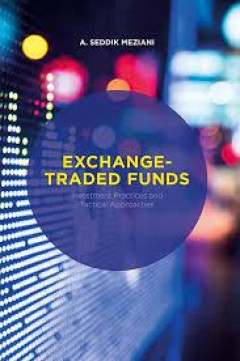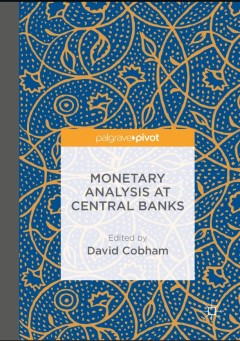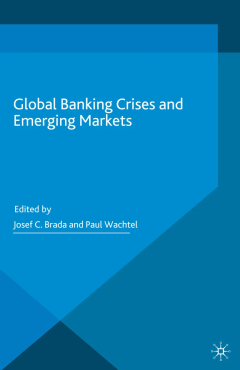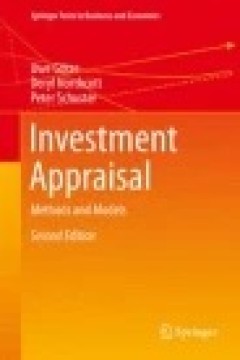Filter by

Exchange-Traded Funds Investment Practices and Tactical Approaches
With Exchange Traded Fund (ETF) sponsors constantly making new types of ETFs available, there is now a variety of ETFs that provide investors with an opportunity to develop diversified investment portfolios. Their sophistication has also grown to include a breed of ETFs that do not passively track the performance of an underlying index. With this assortment of newer ETFs, and more on the way, m…
- Edition
- -
- ISBN/ISSN
- 978-1-137-39094-3
- Collation
- 3 b/w illustrations, 20 illustrations in colour
- Series Title
- -
- Call Number
- -

Global Shocks
his book, which is written from a practitioner’s perspective, fills the void by providing the reader with a toolkit and guiding principles to manage money when markets are in turmoil. It features ten case studies beginning with the breakdown of the Bretton Woods fixed exchange rate system through the current situation in which investors are assessing whether China could become the next bubble…
- Edition
- -
- ISBN/ISSN
- 978-3-319-41104-0
- Collation
- XVII, 192
- Series Title
- -
- Call Number
- 332 SAR g

Modelling in Life Insurance – A Management Perspective
Focusing on life insurance and pensions, this book addresses various aspects of modelling in modern insurance: insurance liabilities; asset-liability management; securitization, hedging, and investment strategies. With contributions from internationally renowned academics in actuarial science, finance, and management science and key people in major life insurance and reinsurance companies, ther…
- Edition
- 1
- ISBN/ISSN
- 978-3-319-29774-3
- Collation
- XVI, 255
- Series Title
- EAA Series
- Call Number
- -

Monetary Analysis at Central Banks
Whatever happened to the money supply? This book explains how the analysis of monetary and credit aggregates is undertaken at the Bank of England, the European Central Bank and (as an example of a developing country) the Bank of Tanzania. The book also explores how this analysis relates to these central banks' monetary policy strategies and how it feeds into policymaking. An editorial introduct…
- Edition
- 1
- ISBN/ISSN
- 978-1-137-59334-4
- Collation
- XI, 139
- Series Title
- -
- Call Number
- -

Modern Multi-Factor Analysis of Bond Portfolios
Where institutions and individuals averagely invest the majority of their assets in money-market and fixed-income instruments, interest rate risk management could be seen as the single most important global financial issue. However, the majority of the key techniques used by most investors were developed several decades ago, and the advantages of multi-factor models are not fully recognised by …
- Edition
- 1
- ISBN/ISSN
- 978-1-137-56485-6
- Collation
- xii, 124
- Series Title
- -
- Call Number
- -

Treatises on Solvency II
The European system of insurance supervision under Solvency II constitutes a parallel to supervision of credit institutions under Basel III. At the heart of this new European insurance supervisory regime are the Solvency II Directive, the attendant regulation, and the EIOPA Regulation. The present volume, "Treatises on Solvency II", includes articles on the bases of European insurance supervisi…
- Edition
- 1
- ISBN/ISSN
- 978-3-662-51567-9
- Collation
- XXI, 478
- Series Title
- -
- Call Number
- -

Transforming Payment Systems in Europe
The European payment market has undergone rapid transformation in recent years due to changes in payment habits, new business rules and new legal frameworks and regulation. There has also been an advent of new technologies and payment solutions which has altered the European payments landscape drastically. This book provides an overview of the fundamental issues involved in this new payments l…
- Edition
- 1
- ISBN/ISSN
- 978-1-137-54120-8
- Collation
- XX, 270
- Series Title
- Palgrave Macmillan Studies in Banking and Financial Institutions
- Call Number
- -

Global Banking Crises and Emerging Markets
This timely reader of seminal papers published by Palgrave on behalf of Comparative Economic Studies, examines how and why foreign banks enter emerging markets and the positive benefits they bring to the host countries.
- Edition
- -
- ISBN/ISSN
- 978-1-349-56185-8
- Collation
- XI, 301
- Series Title
- -
- Call Number
- 330 GLO

Investment Appraisal: Methods and Models
This book provides an introduction to investment appraisal and presents a range of methods and models, some of which are not widely known, or at least not well covered by other textbooks. Each approach is thoroughly described, evaluated and illustrated using examples, with its assumptions and limitations analyzed in terms of their implications for investment decision-making practice. Investment…
- Edition
- -
- ISBN/ISSN
- 978-3-662-45851-8
- Collation
- -
- Series Title
- -
- Call Number
- -

Investigating the Performance of Chinese Banks: Efficiency and Risk Features
This book applies econometric techniques to test the relationship between efficiency and risk within the banking industry in China. Chapters examine how efficiency has been affected by different types of risk-taking behaviour and how risk has been an important determinant of bank efficiency in the context of the series of reforms impacting banks in China since 1978. The author begins by unpacki…
- Edition
- -
- ISBN/ISSN
- 978-1-137-49376-7
- Collation
- -
- Series Title
- -
- Call Number
- -
 Computer Science, Information & General Works
Computer Science, Information & General Works  Philosophy & Psychology
Philosophy & Psychology  Religion
Religion  Social Sciences
Social Sciences  Language
Language  Pure Science
Pure Science  Applied Sciences
Applied Sciences  Art & Recreation
Art & Recreation  Literature
Literature  History & Geography
History & Geography